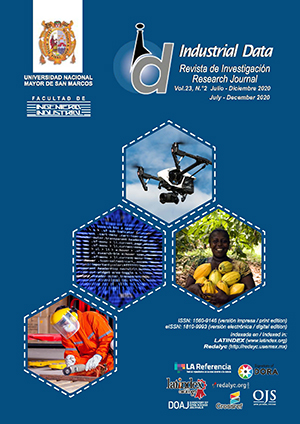Use of Remotely Piloted Aircraft (RPA) in the estimation of sea lion populations in south Chincha Island – Ica
DOI:
https://doi.org/10.15381/idata.v23i2.16921Keywords:
Otaria flavescens, remotely piloted aircraft, RPA, CENICAL, fotogrametry, geographic information systemsAbstract
This paper describes the use of RPA technology as a complementary method during Southern sea lions (Otaria flavescens) counting in Chincha Sur Island, Ica – Peru, as part of the activities scheduled by the Instituto del Mar del Perú (IMARPE). Colonies of these pinnipeds were mapped and its subsequent classification in the Systems of Geographic Information was carried out in order to make comparisons between direct counting on the field and RPA mapping counts. Total values by direct counting and orthophotos were 2300 and 2700 individuals, respectively. While no significant differences were found between the two methods, by means of digital counting, a better detail of the number of individuals on the females and pups categories could be achieved. The use of RPA constitutes a valuable tool that provides geographical reference of each individual and enables repetitions of the counts by different people.
Downloads
Downloads
Published
Issue
Section
License
Copyright (c) 2020 Fabián Brondi Rueda, Regina E. Aguilar Arakaki, Jhon Candelario Fano

This work is licensed under a Creative Commons Attribution-NonCommercial-ShareAlike 4.0 International License.
AUTHORS RETAIN THEIR RIGHTS:
a. Authors retain their trade mark rights and patent, and also on any process or procedure described in the article.
b. Authors retain their right to share, copy, distribute, perform and publicly communicate their article (eg, to place their article in an institutional repository or publish it in a book), with an acknowledgment of its initial publication in the INDUSTRIAL DATA.
c. Authors retain theirs right to make a subsequent publication of their work, to use the article or any part thereof (eg a compilation of his papers, lecture notes, thesis, or a book), always indicating the source of publication (the originator of the work, journal, volume, number and date).



















